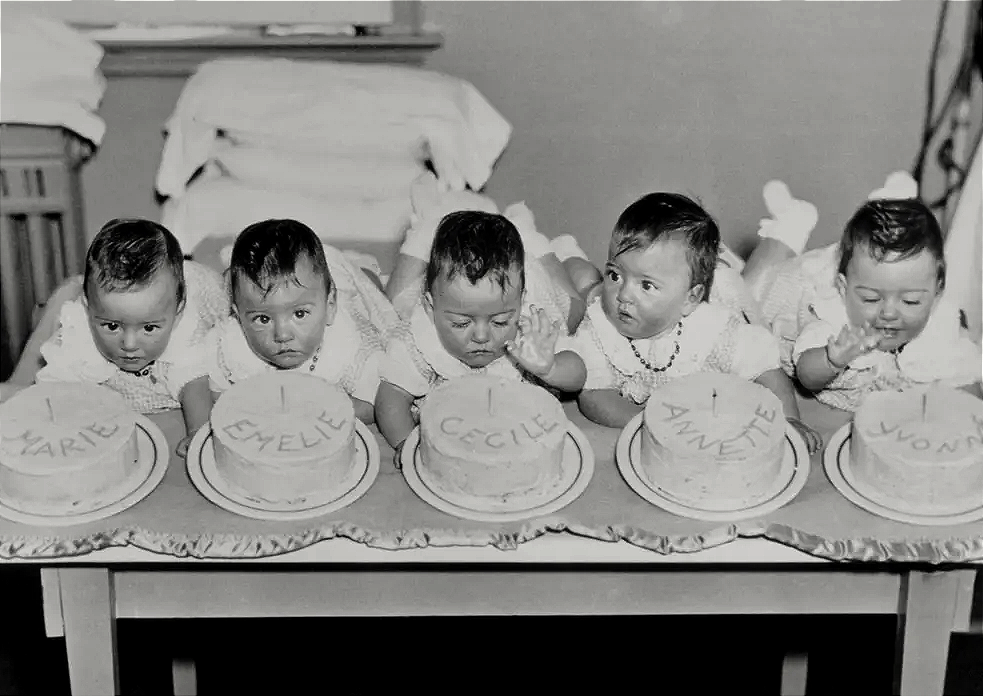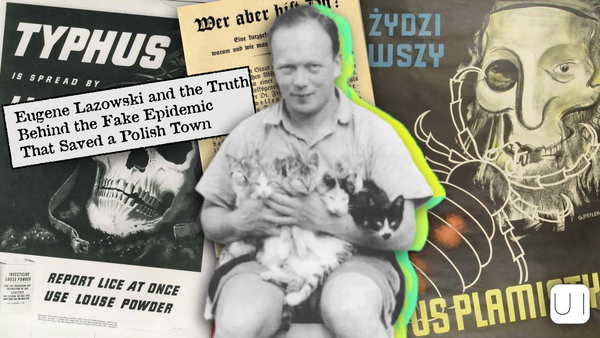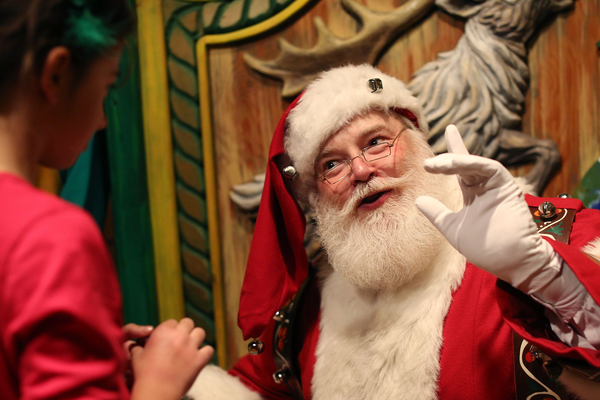The Dionne Quintuplets were famous but it ruined their lives

In 1934, Leon Dionne called a local newspaper in Ontario, Canada and asked how much it would cost to print a birth announcement for his brother’s five daughters, all born to the same mother in one delivery earlier that day. At the time, the world had rarely witnessed the medical marvel of quintuplets. The identical sisters became a media sensation. The Ontario government took legal guardianship of the quints and housing them in a nursery called Quintland, which quickly became a roadside attraction that drew nearly three million spectators. By 1938, the quints were bringing in as much as 25 million Canadian dollars in tourism revenue annually, but for the quintuplets, it came at a cost. They spent half of their childhood in a so-called “baby zoo.” A trust fund they were promised was mismanaged, with just a fraction remaining by the time they entered adulthood and their personal lives were mired in tragedy. (via The Smithsonian)
At 15 years old he hacked NASA's network and stole its space-station software

In 2000, a 16-year-old from Miami pleaded guilty and was sentenced to six months in a detention facility. The juvenile, whose was known on the Internet as "c0mrade," admitted in U.S. District Court in Miami that he was responsible for computer intrusions from August 23, 1999, to October 27, 1999, into a military computer network used by the Defense Threat Reduction Agency, an agency of the Department of Defense charged with reducing the threat to the U.S. and its allies from nuclear, biological, chemical, conventional and special weapons. In addition to the computer intrusions at DOD, on June 29 and 30, 1999, "c0mrade" illegally accessed a total of 13 NASA computers located at the Marshall Space Flight Center, Huntsville, Ala., using two different ISPs to originate the attacks. As part of his unauthorized access, he obtained and downloaded proprietary software from NASA valued at approximately $1.7 million. (via Justice.gov)
The hottest snack in Brazil is a cheese that is made with toasted ants

Taiada Silvania is a cheese made by a single producer in Sao Paulo, who thought mixing milk with native leafcutter ants would be a great idea. Camila Almeida, the owner and founder of Estância Silvânia, came up with the cheese while brainstorming ideas to attract tourists interested in rural attractions. She wanted something that really made her region stand out, and she remembered that the people of the area had long been eating leafcutter ants as part of the local cuisine. Since her farm produced cheese, she decided that adding a few toasted ants to one of their best cheeses would be interesting, and she was right. Today, Taiada Silvania is known all over the world and has won several international awards, including in France. Brazilian indigenous peoples have consumed ants for centuries, maybe even longer, and writer Monteiro Lobato once dubbed the critters “Brazilian caviar." (via Oddity Central)
Hi everyone! Mathew Ingram here. I am able to continue writing this newsletter in part because of your financial help and support, which you can do either through my Patreon or by upgrading your subscription to a monthly contribution. I enjoy gathering all of these links and sharing them with you, but it does take time, and your support makes it possible for me to do that. I also write a weekly newsletter of technology analysis called The Torment Nexus.
He was the Harry Houdini of jail escapes in Japan in the 1930s and '40s

At the foot of Mount Tento in Hokkaido stands the Abashiri Prison Museum, a place where Japan’s harsh penal past is preserved in timber and iron. The open-air museum—once an actual prison—now houses the original cell blocks, administration offices, and chapel, all of which were relocated and restored to show what life was like behind its cold wooden walls. Wandering through its dim corridors, visitors often stop short at a startling sight: a life-size mannequin dangling overhead, seemingly caught in the act of wriggling to freedom through the rafters. Clad in nothing but a white loincloth, the figure portrays Yoshie Shiratori, a prisoner no jail could hold. Between 1936 and 1947, the man known as the “Harry Houdini of Japan” pulled off four daring prison escapes, earning a legend’s status among escape artists. (via Amusing Planet)
In 1912 the Plaza Hotel in New York City held a high society cat wedding

In December 1912, Mrs. George Bailey Brayton invited the owners of cats “of aristocratic temperament” to a wedding of her cats, Don Dai and the Quakeress, described as “a tabby of royal blood.” The feline wedding would take place during the Silver Society Cat Show in the Grand Ballroom of the Plaza Hotel. Don Dai was a 13-month-old, prize-winning English silver chinchilla cat of British ancestry. Mrs. Brayton purchased the cat for $150 and shipped him back to New York on the Wilson-Furness Leyland steamer Cambrian in his own stateroom. On board the ship, Don Dai slept in a velvet-lined basket, had his own steward, and “partook of cream and only the daintiest morsels.” The story was covered by newspapers across the country. The Brooklyn Daily Times wrote that the cats were married by the Reverend Thomas Meeyow at the Church of the Holy Cats; maids of honor were Miss Fluffy Milksop and Miss Silky Hairball; ushers were Thomas Yowler and Thomas Mouser; and the honeymoon was an extended tour of all the back fences between New York and Niagara Falls. (via Hatching Cat)
He can control a robot arm using his mind

Acknowledgements: I find a lot of these links myself, but I also get some from other newsletters that I rely on as "serendipity engines," such as The Morning News from Rosecrans Baldwin and Andrew Womack, Jodi Ettenberg's Curious About Everything, Dan Lewis's Now I Know, Robert Cottrell and Caroline Crampton's The Browser, Clive Thompson's Linkfest, Noah Brier and Colin Nagy's Why Is This Interesting, Maria Popova's The Marginalian, Sheehan Quirke AKA The Cultural Tutor, the Smithsonian magazine, and JSTOR Daily. If you come across something interesting that you think should be included here, please feel free to email me at mathew @ mathewingram dot com



